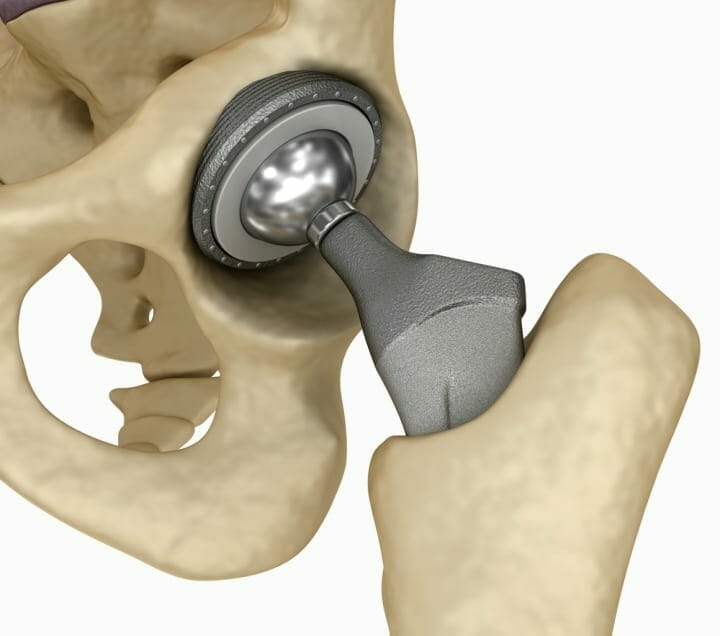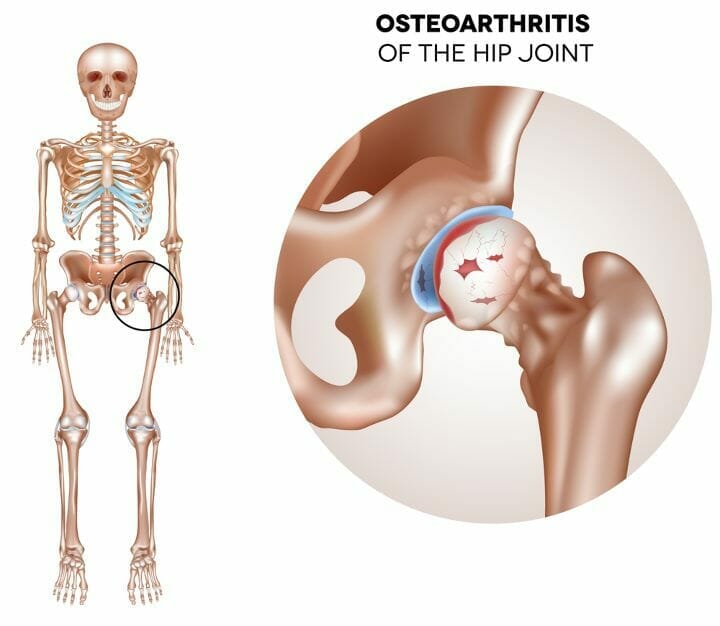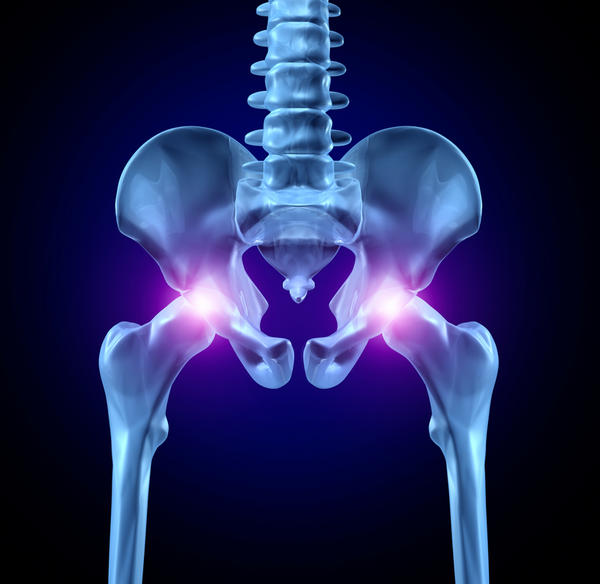
Anterior hip replacement is a surgical procedure that replaces the damaged hip joint with an artificial one. This type of surgery is becoming increasingly popular due to its minimally invasive approach and faster recovery time. Recovery from anterior hip replacement surgery can be a long process, but it is important to take it week by week to ensure a successful outcome.
During the first week after surgery, patients can expect to experience pain and discomfort. They will need to use crutches or a walker to move around and will be advised to avoid bending at the hip or crossing their legs. Physical therapy will begin during this time to help regain strength and mobility in the hip joint. In the second week, patients may start to feel more comfortable and may be able to reduce their use of crutches or walker. However, they will still need to avoid certain movements and activities that could put stress on the hip joint.
Understanding Anterior Hip Replacement
Anterior hip replacement is a surgical procedure that involves replacing a damaged or worn-out hip joint with an artificial joint. This type of surgery is also known as total hip arthroplasty and is performed using the direct anterior approach. The direct anterior hip replacement is a type of surgery that allows the surgeon to access the hip joint through the front of the body, rather than the side or back.
During the surgery, the surgeon removes the damaged or worn-out hip joint and replaces it with an artificial joint made of metal, plastic, or ceramic. The new joint is designed to replicate the natural movement of the hip joint, allowing the patient to move more freely and without pain.
The direct anterior approach is becoming increasingly popular because it offers several benefits over other types of surgery. For example, it allows for a smaller incision, which means less scarring and a faster recovery time. It also reduces the risk of dislocation, which is a common complication of hip replacement surgery.
Patients who undergo anterior hip replacement surgery can expect to spend a few days in the hospital before being discharged. During this time, they will receive pain medication and physical therapy to help them regain strength and mobility. They will also be given instructions on how to care for their incision and how to avoid certain activities that could put stress on the new joint.
Overall, anterior hip replacement is a safe and effective surgery that can help patients regain their mobility and quality of life. However, it is important to discuss the risks and benefits of this type of surgery with a qualified surgeon to determine if it is the right option for you.
Comparing Surgical Approaches
When it comes to hip replacement surgery, there are several surgical approaches that a surgeon may use. The most common surgical approaches are anterior hip replacement and posterior hip replacement. Each approach has its own advantages and disadvantages, and the choice of approach depends on the patient’s condition and the surgeon’s preference.
This is surgeon and patient specific. There is no best approach but rather the best option for the patient and the surgeon’s experience with the approach.
Anterior Hip Replacement
This approach allows the surgeon to access the hip joint from the front, which means less cutting of muscles and tendons. This can lead to a faster recovery time and less pain after surgery. It usually requires a different set of skills from the surgeon.
Posterior Hip Replacement
Posterior hip replacement is another common approach to hip replacement surgery. In this approach, the surgeon makes an incision on the back of the hip and removes the damaged bone and cartilage. The surgeon then replaces the hip joint with an artificial joint.
The advantages of posterior hip replacement are that it is the most common and does not require special equipment. It is also best for revising a previous replacement. However, the disadvantages are that it may increase the risk of dislocation.
Comparing the Approaches
When comparing the different approaches, it is important to consider the patient’s condition, age, and lifestyle. Overall, each surgical approach has its own advantages and disadvantages, and the choice of approach should be made on a case-by-case basis.

The Recovery Process
The recovery process after anterior hip replacement surgery is crucial for a successful outcome. The patient must follow the instructions given by their surgeon and physical therapist to ensure a smooth recovery. The recovery period may vary from patient to patient, but generally, it takes around 12 weeks to fully recover.
During the first week after surgery, the patient may experience pain and discomfort. Pain medication will be prescribed to manage the pain. The patient will also be instructed to use crutches or a walker to assist with mobility. Physical therapy will begin during this week to help the patient regain strength and range of motion.
In the second and third week, the patient may still experience some pain and discomfort. However, they should begin to feel more comfortable with their mobility aids. Physical therapy will continue to focus on regaining strength and range of motion. The patient may also be instructed to perform exercises at home to aid in their recovery.
By the fourth and fifth week, the patient should start to feel more comfortable and experience less pain. They may be able to walk without mobility aids. Physical therapy will continue to focus on regaining strength and range of motion. The patient may also begin to perform more challenging exercises to aid in their recovery.
During the sixth to twelfth week, the patient should continue to improve and regain strength and range of motion. Physical therapy will continue to focus on these areas, as well as balance and coordination. The patient may also begin to perform more advanced exercises to aid in their recovery.
Overall, the recovery process after anterior hip replacement surgery is a gradual process. The patient must be patient and follow the instructions given by their surgeon and physical therapist to ensure a successful recovery.
Week 1: Immediate Post-Operative Period
The immediate post-operative period after an anterior hip replacement surgery is crucial for a successful recovery. During this week, patients will be monitored closely in the hospital to ensure that they are healing properly and to manage any pain or discomfort.
Hospital Stay
Patients can expect to stay in the hospital for one to two days after surgery. During this time, medical professionals will monitor the patient’s vital signs, administer medication, and help them with mobility.
Day of Surgery
On the day of surgery, patients will receive anesthesia and undergo the procedure. After the surgery, patients will be moved to a recovery room where they will be monitored closely until they are stable enough to be moved to their hospital room.
Hip Pain
Hip pain is common after surgery, but patients should expect to experience less pain than with traditional hip replacement surgery. Narcotic pain medications will be prescribed to manage pain, but patients should expect to gradually reduce their use of these medications over time.
Medications
In addition to narcotic pain medications, anti-inflammatory medication may also be prescribed to reduce swelling and inflammation. Patients should take these medications as directed by their healthcare provider.
Overall, the first week after anterior hip replacement surgery is focused on managing pain and ensuring that the patient is healing properly. Patients should follow their healthcare provider’s instructions closely and avoid overexertion or activities that could jeopardize their recovery.
Week 2-3: Early Recovery
During the second and third weeks of recovery from anterior hip replacement surgery, patients can expect to gradually increase their mobility and independence. While it is important to continue following hip precautions to avoid dislocation, patients can begin to engage in gentle exercises and activities.
Patients may continue to work with a physical therapist to regain strength, flexibility, and balance. The physical therapist may also teach the patient how to properly use assistive devices such as crutches or a walker.
Formal physical therapy may begin during this time, which can include exercises to improve hip range of motion and strengthen the surrounding muscles. It is important to follow the physical therapist’s instructions carefully to ensure proper healing and avoid complications.
At home, patients can work with a home therapist or continue with gentle exercises recommended by their physical therapist. It is important to avoid high-impact activities and movements that could put stress on the hip joint.
Overall, the second and third weeks of recovery are a crucial time for patients to gradually increase their activity level while still following hip precautions and taking necessary precautions to ensure proper healing.

Ongoing Recovery and Rehabilitation
After the initial weeks of recovery from anterior hip replacement surgery, ongoing rehabilitation is essential for the patient to regain full hip function and return to their normal daily activities. The focus of rehabilitation shifts towards increasing range of motion, strength, and endurance.
Physical therapy is an important component of ongoing recovery. Patients are typically advised to continue with physical therapy exercises for at least 3-6 months after surgery. These exercises are designed to improve hip function, balance, and coordination. Patients may also be advised to perform low-impact exercises such as swimming, cycling, or walking to maintain an active lifestyle.
As patients progress through their rehabilitation, they can expect to experience an improvement in their quality of life. They will be able to perform normal daily activities with greater ease and less pain. Patients may also be able to return to more active pursuits such as sports or other recreational activities.
It is important for patients to continue to follow their surgeon’s advice regarding weight-bearing restrictions and activity level. Patients who are careful and follow their rehabilitation plan are more likely to experience a successful outcome and a return to normal hip function.
Potential Complications and Risks
Anterior hip replacement surgery is generally considered safe and effective. However, as with any surgical procedure, there are potential complications and risks. It is important for patients to be aware of these risks before undergoing surgery.
Complications and risks associated with anterior hip replacement surgery may include:
- Infection: Although rare, infection is a potential complication of hip replacement surgery. Patients may be given antibiotics before and after surgery to reduce the risk of infection.
- Blood clots: Blood clots can form in the legs after surgery and travel to the lungs, causing a potentially life-threatening condition called pulmonary embolism. Patients may be given blood thinners to reduce the risk of blood clots.
- Dislocation: In some cases, the new hip joint may become dislocated. Patients may be advised to avoid certain movements and activities to reduce the risk of dislocation.
- Nerve damage: Nerve damage can occur during surgery, leading to numbness, weakness, or pain in the affected leg. In most cases, nerve damage is temporary and resolves on its own.
- Fracture: The thigh bone (femur) can be fractured during surgery, particularly in patients with weak bones. This can prolong recovery time and require additional surgery.
- Implant failure: The new hip joint may fail over time, leading to pain, stiffness, and the need for revision surgery.
Patients should discuss these potential complications and risks with their surgeon before undergoing anterior hip replacement surgery. By understanding the risks, patients can make informed decisions about their treatment and take steps to reduce the likelihood of complications.
Role of Family and Support Network
Recovering from anterior hip replacement surgery can be a challenging process, and having a strong support network can make all the difference. Family members and friends can play a critical role in helping patients through each stage of their recovery.
During the first few days after surgery, patients will likely need assistance with basic tasks like getting out of bed, using the bathroom, and preparing meals. Family members can help by providing physical support, preparing meals, and running errands as needed. They can also provide emotional support by listening to the patient’s concerns, encouraging them to stay positive, and helping them stay motivated to complete their rehabilitation exercises.
As the patient progresses through their recovery, family members can continue to play an important role by helping them stick to their rehabilitation plan and providing encouragement and motivation. They can also help patients manage any pain or discomfort they may be experiencing by ensuring they take their medications on schedule and providing ice packs or other comfort measures as needed.
It’s important for family members to be patient and understanding during the recovery process, as it can take several weeks or even months for patients to fully regain their strength and mobility. They should be prepared to offer ongoing support and assistance as needed, and to celebrate each milestone the patient achieves along the way.
In addition to family members, patients may also benefit from joining a support group or connecting with others who have undergone hip replacement surgery. These groups can provide a valuable source of information, encouragement, and emotional support, and can help patients feel less isolated during their recovery.
Overall, the role of family and support network is crucial for patients recovering from anterior hip replacement surgery. With the right support and encouragement, patients can successfully navigate each stage of their recovery and return to their normal activities as soon as possible.

Frequently Asked Questions
Patients who undergo anterior hip replacement surgery may have a lot of questions about the recovery process. Here are some of the most common questions and answers:
What is the most important thing to remember during recovery?
The most important thing to remember during recovery is to follow the instructions of your orthopedic surgeon. They will give you specific guidelines on how to care for your incision, how to manage pain, and when you can resume normal activities. It’s important to follow these instructions closely to ensure a successful recovery.
What is the best approach for hip replacement surgery?
This is surgeon and patient specific. There is no best approach but rather the best option for the patient and the surgeon’s experience with the approach. The anterior approach is considered by some to be the best approach for hip replacement surgery. This approach allows the surgeon to access the hip joint from the front, which means less cutting of muscles and tendons. This can lead to a faster recovery time and less pain after surgery.
How important is surgeon experience in hip replacement surgery?
Surgeon experience is very important in hip replacement surgery. It’s important to choose a surgeon who has experience with the anterior approach and who has a good track record of successful surgeries. Patients should ask their surgeon about their experience and success rates before deciding to undergo surgery.
What are some of the most common questions patients have after surgery?
Its a good idea to review questions with your surgeon prior to surgery. Some of the most common questions patients have after surgery include:
- How long will it take to recover?
- When can I resume normal activities?
- What should I do if I experience pain or swelling?
- When should I schedule follow-up appointments with my surgeon?
What is the best advice for a successful recovery?
The best advice for a successful recovery is to follow your surgeon’s instructions closely, take any prescribed medications as directed, and attend all follow-up appointments. It’s also important to get plenty of rest, eat a healthy diet, and avoid activities that could put stress on your hip joint.
